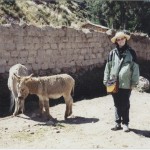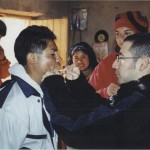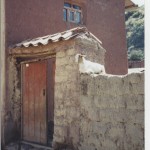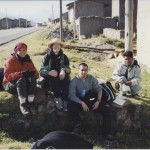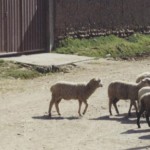Ancient Genomics and the Molecular Mechanisms of the Arsenic Tolerance in Northern Chile:
NSF-Doctoral Dissertation Research Improvement Grants (DDRIG) BCS-2142160 (Stone PI, Co-PI Mario Apata)
This project led by PhD student Mario Apata is centered on reconstructing the genetic prehistory of ancient populations exposed to arsenic in the Atacama Desert using ancient and modern genomic data from the Camarones Valley. In addition, in order to understand the pre-Hispanic diet, oral health and environmental exposures, we will characterize the oral microbiome diversity among pre and post agricultural populations. Finally, we will evaluate regulatory mechanisms of the arsenite methyltransferase (AS3MT) gene involved in the arsenic metabolic efficiency observed in ancient and modern Andean people, by using gene reporter assays in hepatocyte cell culture.
Understanding how humans have evolved to tolerate arsenic is crucial for understanding the genetic underpinning of toxicological and health differences observed among populations living in arsenic endemic areas in the world. Ancient populations in the Atacama Desert have been exposed to this element 7,000-500 years before present (BP), showing several toxicological effects. While modern people have shown to metabolize arsenic very well (e.g., Camarones valley). Thus, this region is a natural laboratory to understand the evolution of humans to this extreme environment. Along this line, this project will address several questions and hypotheses intersecting molecular anthropology, metagenomics of oral microbiomes, and functional assays of gene expression.
Population history of Peru:
We are investigating genetic diversity in prehistoric and present-day human populations of the South-central Andes. This project is a collaboration with Dr. Beatriz Lizarraga of San Marcos University in Lima, Peru and Veronica Rubin de Celis Massa of Ricardo Palma University in Lima, Peru. The general aim of this research is to survey mitochondrial DNA, Y chromosome and short tandem repeat loci in populations in Peru and investigate the patterning of genetic diversity in comparison with geographic and linguistic patterns. (BCS #0401434)
The Peruvian Andes was home to multiple major civilization centers of the pre-contact Americas, and contemporary peoples in this region retain a large reservoir of Native American genomic diversity. Our investigation examines fine-scale patterns of genetic diversity in traditional populations from the Central Andes to: (1) characterize their demographic history, (2) identify candidate loci under natural selection, and (3) understand how genomic architecture and admixture influence reproductive fitness in a high altitude environment. Characterizing genetic structure in Andean populations has the potential to uncover rare genetic variation of biological and evolutionary importance. Our research focuses on generating high-resolution genome wide data to elucidate local patterns of population structure, critically reassess existing models for the original peopling of the Andes, and provide a better understanding of how ancient demographic processes shaped the genetic diversity of indigenous Peruvians. This work also seeks to identify signatures of selection in order to understand how micro-evolutionary processes lead to genetic and phenotypic adaptation in a high altitude environment.
This project is in collaboration with Dr. Andrés Moreno-Estrada of the Laboratorio Nacional de Genomica para la Biodiversidad (LANGEBIO-Cinvestav) in Irapuato, Mexico (insert link here please: http://www.morenolab.org/), Dr. Beatriz Lizarraga of San Marcos University in Lima, Peru, and Dr. Veronica Rubin de Celis Massa of Ricardo Palma University in Lima, Peru (insert link here: http://www.urp.edu.pe/transparencia/planadocente/?docente=MDYyOTg3NjEi1lo0). Current funding for this work is provided by the National Science Foundation SBE Postdoctoral Fellowship (Award #1711982 to MANC) (insert link here: https://www.nsf.gov/awardsearch/showAward?AWD_ID=1711982&HistoricalAwards=false). This research expands upon previous work from our lab funded by NSF grant BCS #0401434 to ACS.


